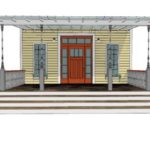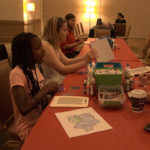
Arts activist Jason Roberts thinks his attention-deficit disorder maybe partly responsible for his launching the Better Block — a community-driven, temporary takeover of blighted neighborhoods. A more “traditional, academic” approach to community redevelopment, the Better Block co-creator said, would be “a long-term series of studies, proposals, and planning initiatives.” But Roberts is someone who doesn’t want to fix things in years, he said, but in days. And, lacking funds, he thought, “How do I find the resources around me, the people, to help me make a better place together?”
He started by bettering his own backyard — South Dallas’ Oak Cliff neighborhood, where Roberts organized a series of Better Block projects in 2010. Each project made depressed blocks into walkable neighborhoods, converting vacant buildings into popup retail stores, and adding bike lanes, outdoor seating, children’s activities, and landscaping for residents to come out to enjoy — for one weekend only.
The Better Block concept has since been replicated in cities around the world. Each project is intended to show a blighted neighborhood’s potential for revitalized economic activity and to spur infrastructure and policy change at the local level. The hope is that some of the businesses that pop up will “stick,” Roberts said, which has happened in a number of cases.
Better Block counts on local volunteers’ social networks to draw a crowd. “So if you have 50 or 100 people” who volunteer for a project, Roberts said, “and they bring out three people each — hopefully, you’ve got three- to five-hundred folks come out.”
Each project typically takes about 90 days to come together, involving community activists — “champions on the ground” — who brainstorm about transforming a block and tackle the logistics, he said. If the Better Block is unable to borrow items such as café tables and chairs, then volunteers build them, using reclaimed materials like pallets. “The bulk of the work occurs about 48 hours before the actual project,” Roberts said, “when everyone is out there with hammers and nails and paintbrushes.”
The Better Block offers workshops for any community looking to create “a living charrette” — a place for local residents to interact with an improved stretch of neighborhood and experience its potential. The organization also acts as a consulting firm that a city can hire to identify a neighborhood’s zoning and ordinance issues, line up the property owners, and do community outreach.
Each project typically requires block-party as well as alcohol and food permits, an event-insurance policy, and sometimes Port-a-Potties on site if there are not enough businesses providing restrooms. If empty buildings don’t have electricity, the Better Block tries to rent generators.
Each Better Block project may be here and gone in the blink of an eye, but leaves a lasting impression. The “biggest goal,” Roberts said, is a “re-stitching of the social fabric surrounding the area — getting people talking to each other, and then taking a bit of ownership.”




